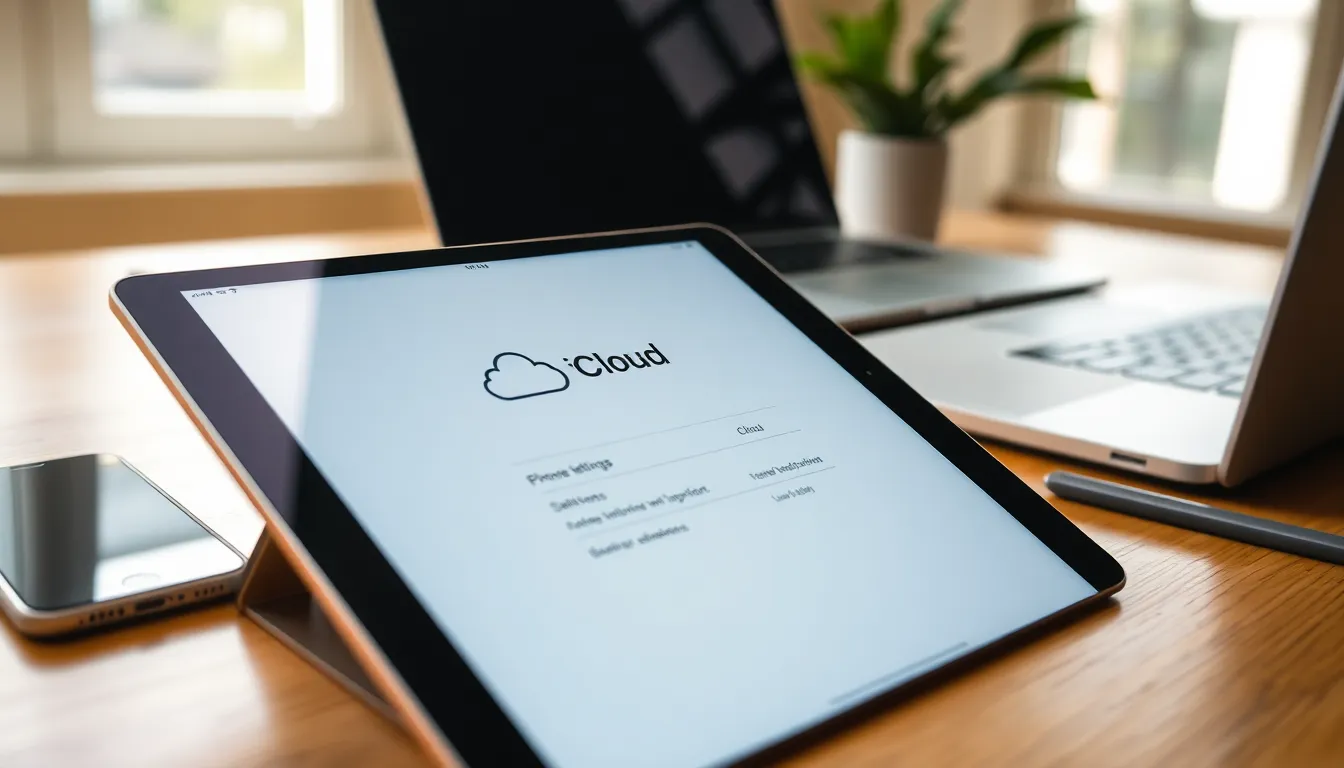In a world where technology rules, sometimes it feels like our devices have a mind of their own. If your iPad is acting more like a moody teenager than a helpful companion, it might be time for a fresh start. Wiping your iPad can breathe new life into it, clearing out the digital cobwebs and giving you a clean slate.
Table of Contents
ToggleWhy You May Need to Wipe Your iPad
Wiping an iPad can resolve various issues. Users often find this necessary when their device becomes sluggish or experiences frequent crashes.
Common Reasons for Wiping
Incompatibility with new software updates can cause performance problems. Accumulating unnecessary files and apps may slow down the device. Users might also choose to wipe their iPad when selling or transferring ownership. Privacy concerns prompt some to erase personal data. Severe system errors sometimes require a complete reset.
Understanding Factory Reset
A factory reset restores the iPad to its original settings. This process erases all data, including apps and personal files, making it crucial to back up important information. Users may access factory reset options through the settings menu. Once initiated, the iPad undergoes a refresh, eliminating glitches. It’s an effective solution for persistent issues that simpler fixes cannot resolve.
Preparing to Wipe Your iPad

Before performing a wipe on an iPad, preparation is crucial to avoid data loss. Taking steps like backing up important information and checking account settings ensures a smooth experience.
Backing Up Important Data
Backing up crucial data protects against loss during a wipe. Users can use iCloud or iTunes for this process. With iCloud, sign in to the account, connect to Wi-Fi, and enable iCloud Backup in the settings. This method automatically saves photos, documents, and app data. Alternatively, using iTunes requires connecting the iPad to a computer, selecting the device in iTunes, and clicking on Back Up Now. This creates a full backup on the local machine. Regular backups prevent data disappearance and facilitate easy restoration after the wipe.
Ensuring iCloud and Apple ID Settings
Verifying iCloud and Apple ID settings ensures the device remains connected after a wipe. Users should confirm their Apple ID by visiting Settings, selecting their name, and checking the email associated with the account. Signing out from iCloud is necessary if the device is being sold or given away. This step disables Activation Lock, allowing the new owner to set it up without complications. Additionally, turning off Find My iPad protects privacy and avoids unnecessary issues during the wipe process.
How to Wipe Your iPad
Wiping an iPad can restore functionality and resolve numerous device issues. Users can choose between two primary methods: the Settings app or Recovery Mode.
Using the Settings App
To wipe an iPad using the Settings app, users start by navigating to the Settings menu. They select General, then scroll down to Transfer or Reset iPad. After tapping Erase All Content and Settings, a confirmation prompt appears. Users enter their passcode and Apple ID password if necessary. The device then initiates the wipe process, which typically takes a few moments. Upon completion, the iPad restarts, showing the initial setup screen.
Using Recovery Mode
For devices that experience severe problems, using Recovery Mode may be necessary. First, users connect the iPad to a computer with iTunes or Finder installed. Pressing and quickly releasing the Volume Up button, followed by the Volume Down button, prepares the device. Continuing, users press and hold the top button until they see the recovery mode screen. On the computer, an option to Restore or Update emerges. Choosing Restore will erase data and restore the iPad to factory settings, solving significant issues and glitches.
What to Do After Wiping Your iPad
After wiping your iPad, users must take essential steps to ensure a smooth experience moving forward. Setting up as new or restoring from a backup are the primary options available.
Setting Up as New
Setting up the iPad as new allows for a fresh start. Users can configure settings according to their preferences right from the outset. Begin by selecting language and region preferences. After that, connecting to Wi-Fi is crucial for the setup process. Users can create a new Apple ID or sign in with an existing account, enhancing access to Apple services. Next, personalization options like Face ID, Touch ID, and Apple Pay can be configured, making the device ready for daily use. This setup process ensures users enjoy a clean slate without legacy data or apps affecting performance.
Restoring from Backup
Restoring from a backup provides a quick way to regain important data after a wipe. Users can choose to restore their information from iCloud or iTunes. For iCloud restoration, selecting the “Restore from iCloud Backup” option during setup is necessary. Then, users must sign in with their Apple ID to access the backups. Restoration from iTunes involves connecting the device to the computer and selecting the preferred backup to transfer data back to the iPad. All previous apps, contacts, and photos can be restored easily, allowing a seamless transition back to the device’s previous state.
Wiping an iPad can be a game-changer when it comes to resolving persistent issues and improving performance. By following the right steps and ensuring all data is backed up, users can effectively restore their device to its original state. Whether addressing software glitches or preparing for a new owner, knowing how to perform a factory reset is invaluable. Once the wipe is complete, users have the flexibility to set up the iPad as new or restore from a backup, making it easier to enjoy a seamless experience. With the right approach, users can keep their iPad running smoothly for years to come.



